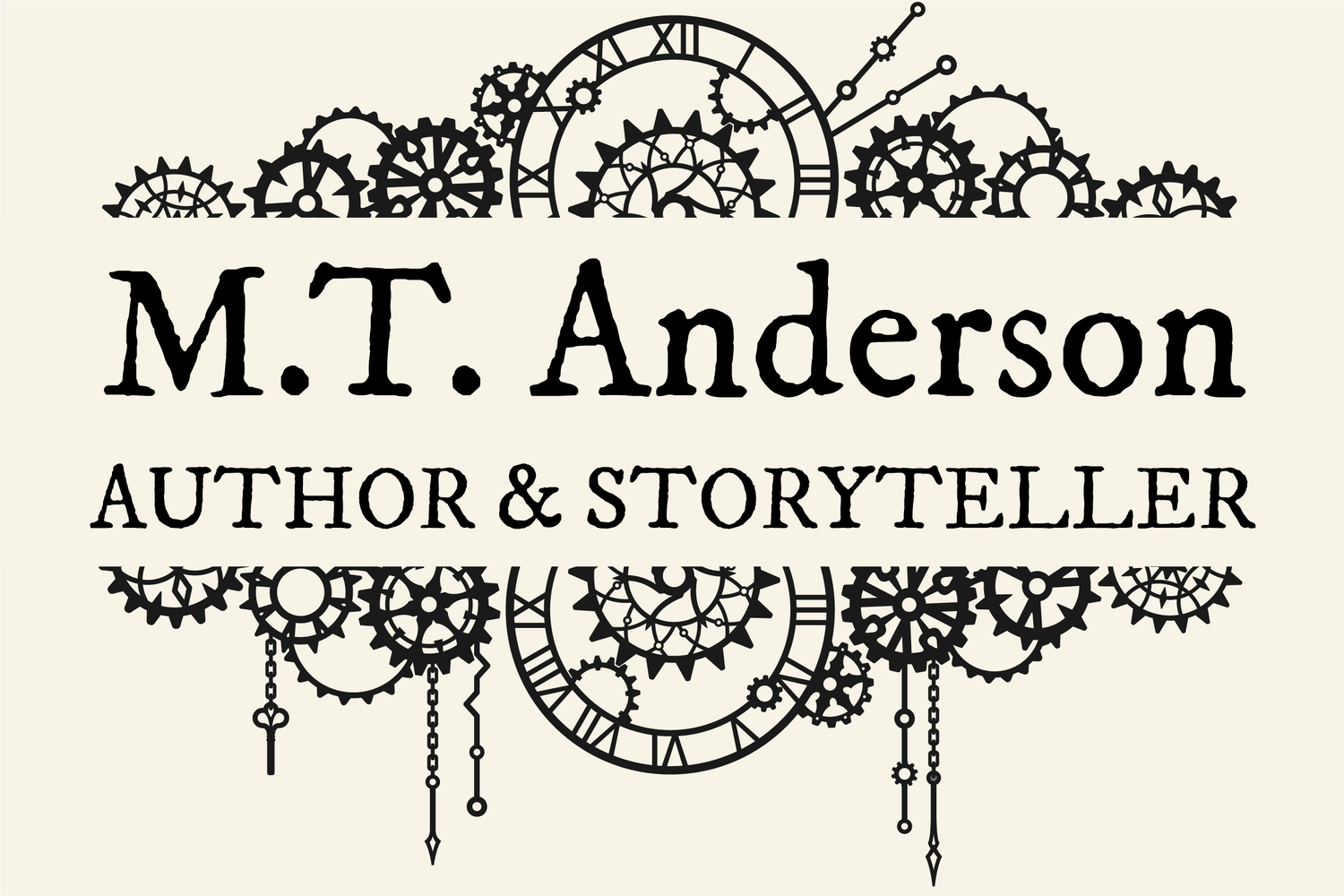The Game of Sunken Places
The Game of Sunken Places was the first book I wrote – but it wasn’t the first book I published.
When I was sixteen or seventeen, I had a dream in which I played a strange, ritualistic game in the woods and then saw the mountains coated in metal. I decided to write a story based on the dream. I had always wanted to write books for kids – something like Susan Cooper’s Dark Is Rising series, or C. S. Lewis’s Narnia books, or Mary Norton’s Are All the Giants Dead, or E. Nesbitt’s fantasy novels, all of which were favorites of mine when I was younger. You can see the influence of those novels on my own writing when reading this book (even though this book is for older readers than E. Nesbitt’s, say).
You also can see the influence of 80s computer text adventure games, which were a big deal when I was a kid – games that were the scrawny precursors of today’s fantasy adventure games. They had no graphics and relied entirely on text descriptions of locations, but my friends and I (and tens of thousands like us) were thrilled and amazed by them and spent hours fighting monsters, solving riddles, and trying to figure out how to use objects like a piece of bent pipe, a big cheese, or an aneroid barometer to win treasure from trolls. Though the Game in my book is a board game, this novel is really about how incredible (and terrifying) it would be if one were transported into the world of one of those 80s text adventure games.
So I wrote the book in my late teen years. By the time I was nineteen or so, it was done and I had revised it, and so I sent it out to publishers. I crossed my fingers and hoped that I was on my way to fame and fortune.
Of course, they all rejected it. A lot of it was bad.
So it sat on a series of old-school “floppy discs” for more than ten years, quietly corrupting. (And when I say these were old school, I mean made of bendable mylar or something … Actually floppy.)
When I was thirty-one or so, I was thinking about that book and how some of it really haunted me. I wanted to read it, but I couldn’t, because the format of data in the 1980s was so radically different from data in the new millennium. That just piqued my curiosity about the book, though. I wanted to see if it still held up when I read it.
I asked a friend of mine who was an I.T. guy at a college to see if he could decrypt the 80s floppy disks. After some work, he got a decryption program to spit out my novel in scrambled chunks of about three sentences long each. I had to go through and figure out the order of these chunks, an arrangement which turned out to be based on some complicated mathematical scheme. Painstakingly, I reconstructed the book I had written when I was seventeen. Sentence by sentence, I cut and pasted it into a modern Word document. For the first time since I was a kid, I could read it.
Some of it was good. Some of it – especially the humor – was amateur. Thank goodness, too – proof that I had actually gotten better at writing with practice. So I revised it heavily. Then I sent it to an editor, David Levithan at Scholastic (who is also a writer). He sent me suggestions of ways to make it even better. I went through and made all sorts of changes, tightening the action, taking out useless dialogue, adding in scenes of greater tension, making sure that the reader could tell how the characters were reacting to their bizarre surroundings. Through a long process of revision – which, in this case, I found absolutely delightful, like a vacation – I turned the book into something I was truly happy with.
One of the great things about revisiting this teenage mindscape was the pleasure in seeing things I’d tried at and failed when I was a kid – and in fixing them now that I had the knowledge and experience of adulthood. For example, I knew that I wanted to make the elfin Norumbegans in the book kind of weird and irresponsible in a wealthy, entitled, vaguely 1920s kind of way … like if The Great Gatsby got in a car-wreck with The Mabinogion. I didn’t really have the finesse to do that as a teenager. By the time I was thirty-two, I’d given up hope that I’d ever be wealthy, but I had mastered irresponsibility, so I was much better able to write those sections of the book.
On the other hand, I sometimes lament that I deleted some of weird flourishes and curlicues from the original version. They were too eccentric to be of interest to the casual reader – but I loved seeing the evidence of how I struggled to learn how to write, and how I experimented, and how I sometimes failed.


